PORT MANAGEMENT ASSOCIATION OF THE CARIBBEAN





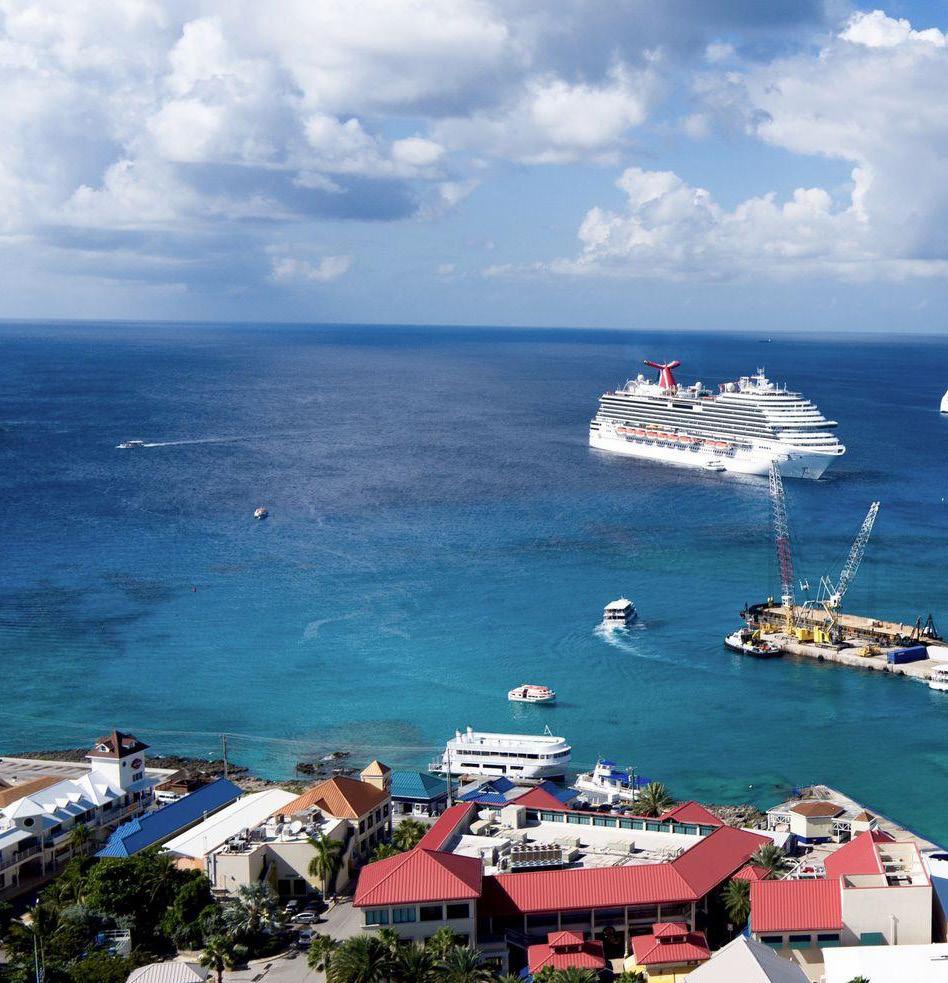
The idyllic azure waters of the Caribbean have long seduced seafarers and wanderers alike. Although the island-strewn region continues to be a magnet for the recreational boating industry, the maritime and ports logistics structure connecting both the islands, and the wider Caribbean with the rest of the world, is in dire need of development.
The importance of upgrading infrastructure and
streamlining operations cannot be underplayed in a region that is practically entirely reliant on imports. The Caribbean’s geography encompasses 13 sovereign island states and 12 (British, French and Dutch) overseas dependencies with different tariffs, creating a complicated and costly landscape for transporting cargo. In addition to diverse tariffs, each island adheres to varying maritime, customs and port policies that have given rise to the need for standardization
and the implementation of uniform rates.
With infrastructure mostly dating from the 1960s, ports across the Caribbean are generally considered inefficient and lagging behind in the context of global development where such entities are now defined by advanced industry trends including digitalization and the implementation of smart ports. The region’s economic potential and growth opportunities are rich and varied, however, the Caribbean
is still overcoming the devastating impact of the COVID19 pandemic, and the aftermath of natural disasters to which the islands are prone. If the Caribbean is to rise in competitiveness and relevance on the global maritime stage, progress relies on two major areas: unlocking true regional integration, followed by the advancement of port management and performance improvement, both tenets upon which the Association was founded.

From PMAC’s base in Barbados, Chairman, Darwin Telemaque, unpacks the need for development to create a globally competitive maritime environment for the Caribbean

 Darwin Telemaque Chairman, PMAC
Darwin Telemaque Chairman, PMAC
North America Outlook (NA): Firstly, could you talk us through PMAC’s inception and why it was founded?
Darwin Telemaque, Chairman (DT): The Port Management Association of the Caribbean (PMAC) conducted its inaugural meeting in Antigua on 26th June 1998, having succeeded the Port Management Association
of the Eastern Caribbean (PMAEC) established on 16th May 1988, under the auspices of NovaPort International Consultants Limited of Canada. The PMAEC was originally conceived as a forum where port managers, recognizing the remarkably similar challenges faced, could seek counsel and freely discuss solutions. However, driven by the need to forge closer regional ties in response to various developments within the industry, the Association extended membership to the wider Caribbean, having been reconstituted as PMAC.
NA: What are some of the main trends currently facing the sector in the Caribbean?
DT: As with all industries, we are still experiencing challenges in the supply chain. The inflationary impacts that we are facing are extraordinarily painful, especially in the private sector.
I think that the Caribbean has never had a global posture from a port and transport perspective – we have always lagged behind. This means that when you do see various industry trends develop, it has more of an impact on the Caribbean since most of our ports, having been initially constructed in the 1960s as break-bulk ports, were not predominantly conducive to containerization.
NV Havenbeheer Suriname is the lessor responsible for the safe, efficient and effective functioning of the port facilities assigned to it. We perform regulatory and monitoring activities. Our job is to manage the dry port infrastructure.

In a broader context, we facilitate the development of trade and commerce based on market forces in collaboration with our port stakeholders. With this in mind, we focus on creating added value for the transport chain and try to regulate infrastructure and facilities but above that, we keep focus on what needs to be done to achieve optimal over-all results for the port in general.
We Offer: Land and buildings rental Reefer station
As a modern port, Suriname and especially Port Management strives for the port to become a service center for transport and logistics; a platform for the optimal facilitation of international transport and trade.


To move forward with continued globalization, the main thrust of transport trends lean towards digitalization, smart ports, utilizing the Internet of Things (IoT), and installing various types of terminal operating systems – all of which are not yet present in the Caribbean.
From a functional perspective, we are still not yet trending at the same pace as the global marketplace. This is mainly because collectively we are a net importer – we export miniscule fractions compared to what we import. Therefore, if there is any inflation in the world, we import that too, and that inflationary impact is then multiplied at the point of sale in any of our markets. To be honest, we are feeling that pinch at present.
As a result, you have a high level of low trade facilitation and very limited trade facilitation processes. Therefore, we are in a space that is ready to receive the next level of advancement to become more globally competitive.
Before we start to posture in a global phase, we need to take a few steps to regularize our structure and operational functions to modernize our various systems. This includes our legislation, our tariffs, and our labor laws to ensure we have a smooth and functional transport and maritime environment before we start to see how we can fit into global trends.
NA: What are some of the greatest challenges that you currently face and what tactics are the Association employing to overcome them?
DT: Our primary challenge is a lack of appropriate port infrastructure and the resources to work towards port digitalization while faced with ongoing supply chain disruptions and its corresponding impacts. The sector
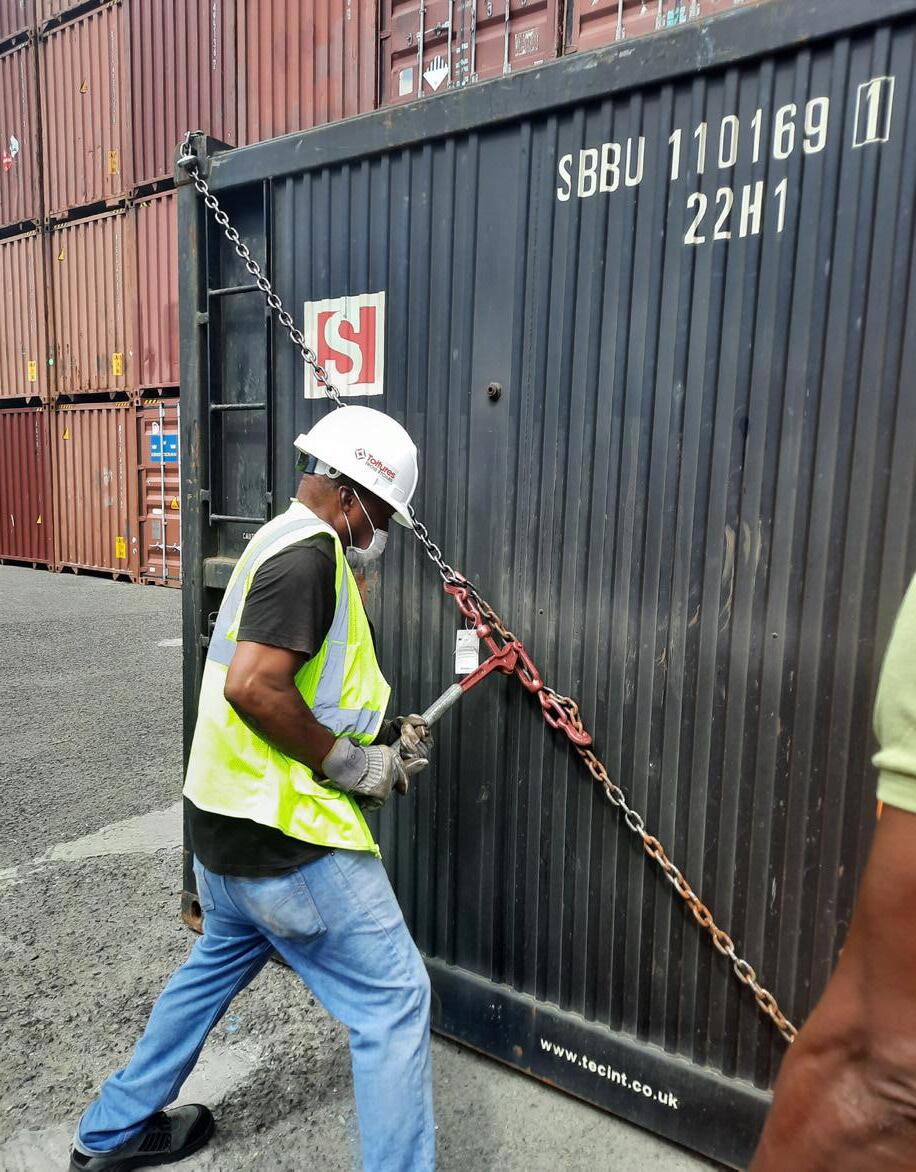

“WE ARE IN A SPACE THAT IS READY TO RECEIVE THE NEXT LEVEL OF ADVANCEMENT TO BECOME MORE GLOBALLY COMPETITIVE”
– DARWIN TELEMAQUE, CHAIRMAN, PMAC


faces a paucity of investment into shipping options, meaning there are no new shipping services.
Working across many different islands involves different tariffs, rather than a seamless space through which cargo can traverse. Due to this lack of standardization, shipping lines often leave the Caribbean frustrated by the lack of coordination and collaboration which drives up costs, reduces profits, and creates an unpredictable business environment. Generally, I would say that decisions in the sector are made using emotions rather than facts and data, and there is no region-wide support for a single hub to leverage economies of scale, as exemplified by Miami.
PMAC is employing various strategies to overcome these challenges. To drive regional integration, we are gaining recognition as an authoritative source of information for research and collaboration with regional
governments, international organizations, and industry partners. In addition, we continue to provide technical support to regional governments, ports, and industry stakeholders while monitoring developments and building closer cooperation. We coordinate the relevant response of member ports to industry changes and requirements, and facilitate improved networking, information sharing and mutually
The Special Economic Zone (SEZ) regime facilitates investments that increase trade and exports for local and international investors in Jamaica.
Jamaica’s SEZ regime promotes trade while taking advantage of its geographical location as a major connector with access to the Americas.
SEZs benefit from fiscal incentives and improved trade facilitation through expedited services offered by the Business Acceleration Centre at the Special Economic Zone Authority. Invest in Jamaica, the place of choice to live, work, raise families and do business.
www.jseza.com
beneficial alliances with industry stakeholders to expand membership among regional ports.
We advocate for our member ports by facilitating the development of a uniform and sustainable philosophy regarding the attainment of common, mutually beneficial objectives, such as uniformed regional tariff rates.

In addition, to improve port management and performance, we provide leadership in the promotion of professionalism regarding port administration and operational matters across the Caribbean. We are collaborating with many of the regional ports in the development of improved training, quality systems and standards, and creating a network to identify best practices in port operations. Finally, we are establishing the Port and Logistics Data Intelligence Platform (PLDIP), a shared data platform to serve the needs of regional governments, ports, and industry stakeholders.




NA: Are there any exciting projects either ongoing or in the pipeline that you would like to highlight?
DT: We are currently working on the following initiatives:
• The launch of a sustained program incorporating international certification of PMAC training via the Chartered Institute of Logistics and Transport (CILT) endorsement.


• The establishment of the PLDIP across member ports.
• The development of an effective social media program including utilization of the updated PMAC website.
DT: The reason for the formation of PMAC was to facilitate industry knowledge among regional ports. We want to ensure that small ports have a voice where they can share not only their concerns, but also their successes, best practices, and innovative steps they have taken. While the ports themselves are not natural breeding grounds of the highest level of efficient port management systems, the idea behind PMAC is to bring together the best components that we have. Since all ports have similar legislation and functions and are the principal facilitators

With extensive 24/7 facilities and services the ports of Curaçao provides your one-stop maritime solution.
Port services include:
Tug services
Nautical assistance
Underwater services
Ship repair and maintenance
CPA develops and manages all ports in Curaçao, ensuring quality nautical services, safety and security in the ports in an environmentally responsible manner.

Cargo & supplies
Salvage
Bunkering and provisions
Surveys
Transport
Fresh water delivery
of imports to the country, we have to harness better experiences and better outcomes and share them across the board so that we are all learning and growing from those advancements.
Over the years, PMAC has grown in experience and modern leadership. Our core focus going forward must therefore address the issue of human capacity. The modernization of our ports from an infrastructure and digitalization perspective will work towards improving the corporate governance structure that exists over our ports and the legislation that allows our ports to exist, as well as some of the other archaic structures and tariffs. These are the mandates that we believe PMAC needs to address, and we will continue to focus on going forward.
Waste management Training curports
curaçao-ports-authority
curacaoports
For the immediate future, we are calling 2023 a year of training. We had our first training session with all the human resources (HR) and development training managers for all primary ports a few weeks ago where we introduced the concept and the idea that we are not just going to have training, but we want the HR managers to do an audit in their various organizations and identify the gaps and limitations that exist, so that we can design the actual training to specific needs rather than taking a shotgun approach.
We are not only targeting the problem, but we want to be resolution-oriented to see the transformation, and work towards having that transformation result in better outcomes for the individual ports, the respective countries and the Caribbean region.
“OVER THE YEARS, PMAC HAS GROWN IN EXPERIENCE AND MODERN LEADERSHIP. OUR CORE FOCUS GOING FORWARD MUST THEREFORE ADDRESS THE ISSUE OF HUMAN CAPACITY”
– DARWIN TELEMAQUE, CHAIRMAN, PMAC
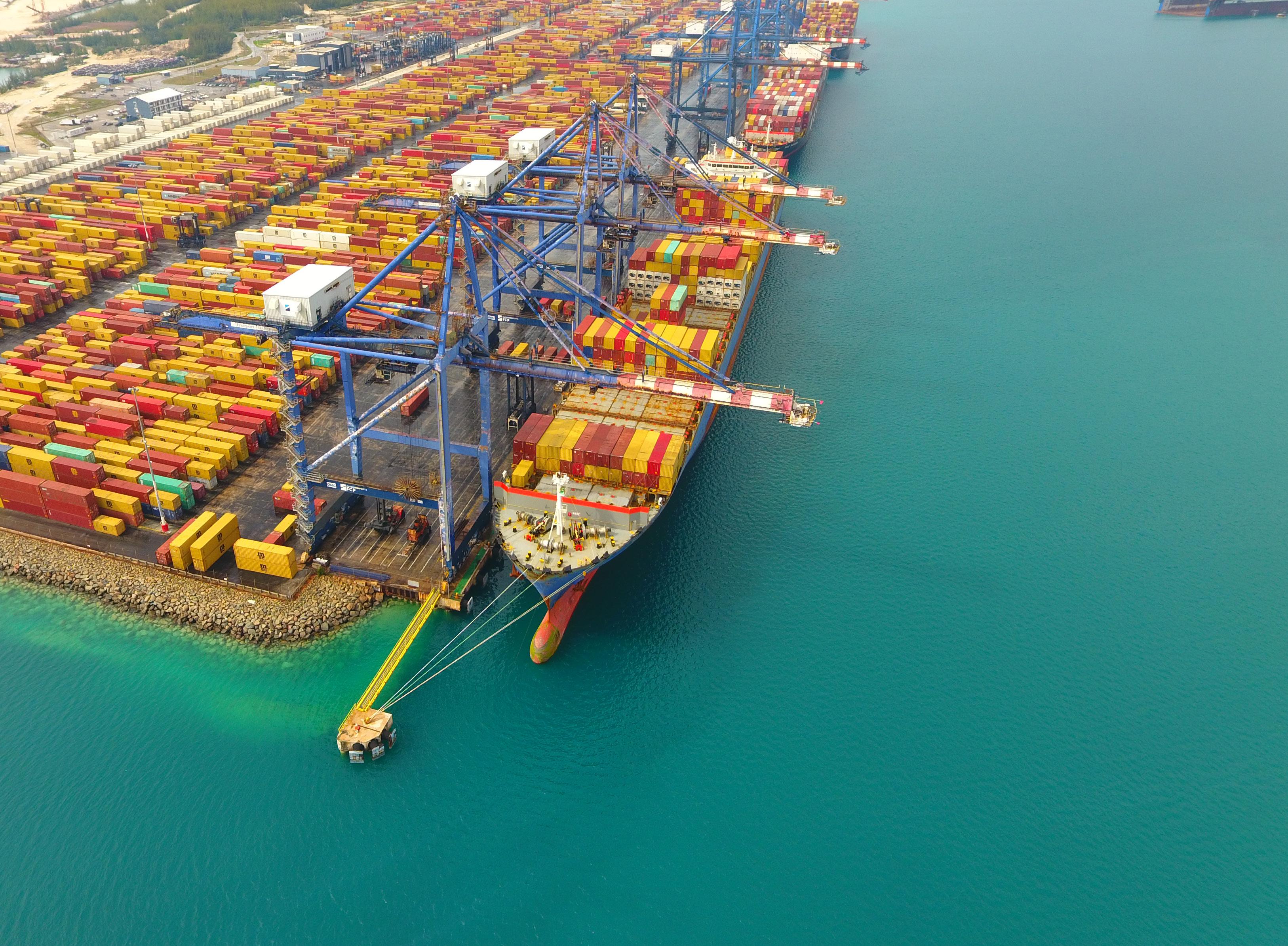
Located in Freeport on Grand Bahama Island — one of the largest islands in The Bahamas - Freeport Container Port is situated just 100 miles from the port of Miami, Florida.


Hutchison Ports FCP is the deepest container terminal in the region and serves as a major container transshipment hub for the eastern seaboard of the US and the principal east, west, north and south line-haul routes. FCP provides 16 meters (m) of draft, and 1,036m of berth length, which allows multiple mega vessels to be facilitated at the same time, making us a powerhouse of international trade.
Our innovative and efficient 24-hour operation is driven by our team of more than 500 members, who are our biggest competitive advantage in maintaining our position as the ‘Transshipment Hub of The Americas’. With our dedicated team and use of cutting-edge technology, including realtime communications and port-management systems, FCP is capable of handling the largest container vessels in the world.
Hutchison Ports FCP currently operates six super post Panamax and four post Panamax quay cranes. Through continual investment in world-class equipment and infrastructure, Hutchison Ports FCP bets on the future with innovation at the helm of our daily activities. Our three newest STS (Ship to Shore) cranes are Remote Operating System (ROS) cranes. Their design allows for remote operations, which enhances operator safety and improves productivity. FCP was the first port in the region to implement ROS cranes. Onsite availability of both an STS crane simulator and a straddle carrier simulator provide continuous training for crane operators with the capability to simulate varying scenarios.
Our acquisition and management of advanced technology such as this has put FCP in a position to also function as an innovative learning center and that welcomes other industry partners to our terminal for hands-on training.
Over the last two years, FCP has invested in state of the art equipment such as hybrid straddle carriers, which significantly reduce our carbon footprint and emission of greenhouse gases. Over the next two years, we have committed to further invest $20 million toward energy-efficient equipment as we strive to progress the Hutchison group’s global sustainability goals.
FCP currently rests on a fully formed peninsula with available land to facilitate seamless expansion of the berth by 800m and the yard by 23 hectares.
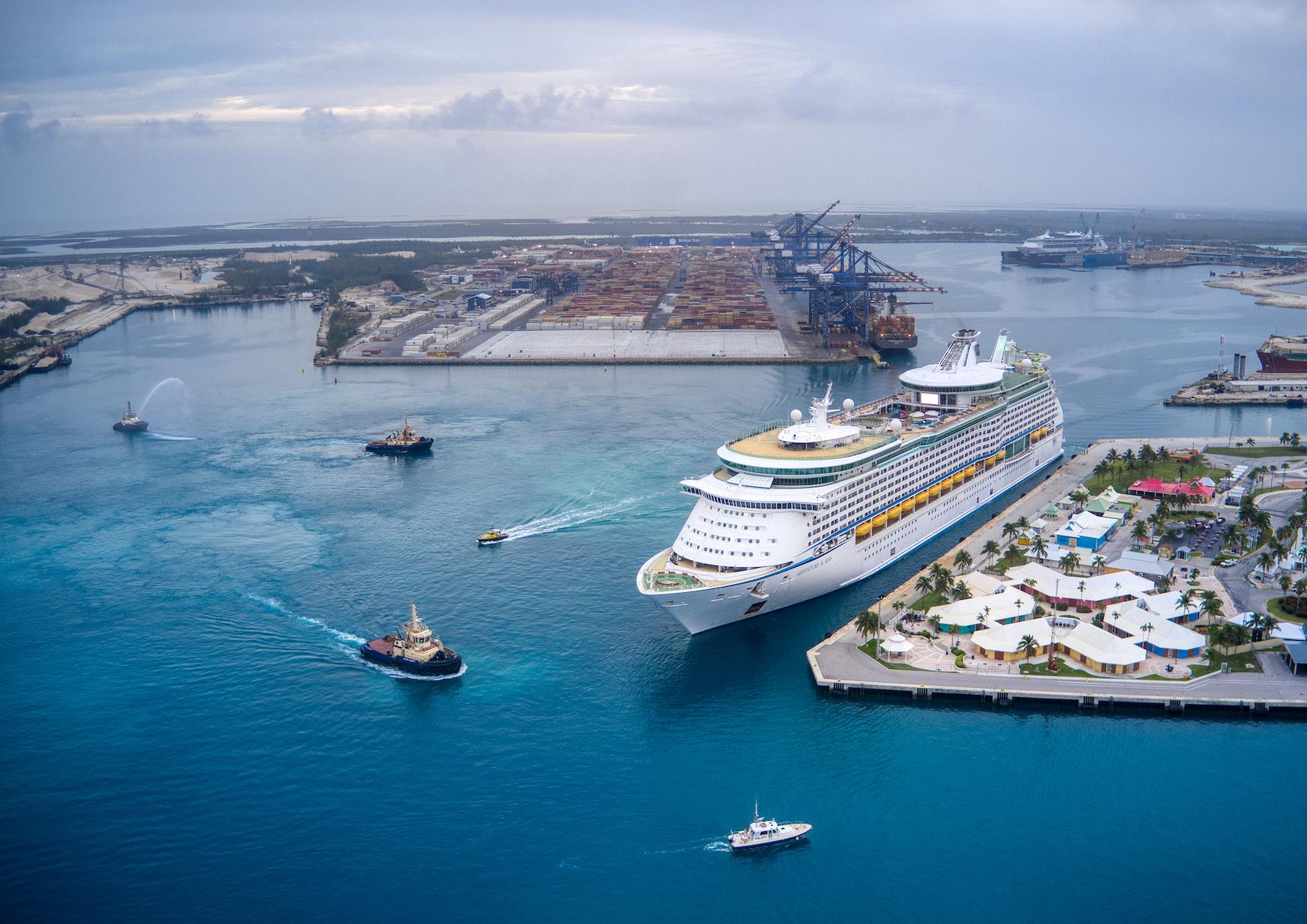
When the City of Freeport was born in 1955 with the signing of the Hawksbill Creek Agreement there was one defining mandate: to dredge a deep-water harbor that became the catalyst for the growth and development of Grand Bahama Island, The Bahamas.
Hutchison Ports FHC is privately owned and operated through a joint venture between Hutchison Ports and Port Group Limited. It is one of the largest man-made harbors in the world and the deepest harbor in the region, having roughly 20 berths and 4,400 meters (m) of berth line.
The entrance channel and turning basin are dredged to a depth of 16m (52 ft), and there is a huge expanse of sheltered waters. A diverse mix of businesses utilize the services of Freeport Harbour for cruise and day ferry visits, roll-on/roll-off facilities for containerized and LTL cargo, car transshipment, wet docking and ship repair facilities. Our facilities can accommodate three cruise ships, five rollon/roll-off vessels, and two 900 ft wet-docking berths. Vessels with a maximum draft of 30 ft can be accommodated alongside. Cruise lines of up to 1,000 ft, length overall, can be facilitated with tugboat and pilot services available 24/7.
The Freeport Harbour, an ISPS certified port facility, is dynamic and has been in a constant state of development since the initial dredging in 1956. Today, FHC is the landlord to 690 acres of landholding, with tenants consisting of several world-class organizations notably including Freeport Container Port (FCP) www.hutchisonportsfcp.com, The Grand Bahama Shipyard www.grandbahamashipyard.com (a world leader in dry-docking, ship repairs and refurbishments) as well as other large-scale industrial and marine-related facilities which have made Freeport a world-class maritime center.
FHC has also welcomed tenants who share our values of sustainability, notably wastewater and oil recycling facilities (Eco-Oil Ltd.) as well as the manufacturing sustainable alternatives to single use plastics (Calcean Minerals and Materials LLC).
Part of FHC’s current development plan entails expansion to accommodate new and diverse commercial enterprise opportunities.
One major development in the pipeline is a new cruise ship pier complex and berthing area, along with a retail and commercialvillage. With this massive project (expected to be complete in 2025), there is a unique opportunity for complementary businesses to join our community. FHC anticipates welcoming new tenants to maximize waterfront land designated for lowimpact green businesses, eco-tourism and aquaculture as well as new waterfront land zoned for sustainable manufacturing, clean energy supply, and businesses servicing cruise lines and passengers.
The expansion of the Freeport Harbour also brings with it long-awaited growth opportunities for companies like the Grand Bahama Shipyard that will be able to expand their operations and allows Freeport Harbour to retain its competitive edge over other ports. This includes creating additional berthing areas for FCP, new industrial development, and serving the growing needs of the local industry.
The continued development of the Freeport Harbour allows Grand Bahama Island, and by extension, The Bahamas to remain competitive and increase job and business opportunities within the harbor.

As we grow and develop to meet our needs, we do so without compromising future generations. At Hutchison Ports FCP and Hutchison Ports FHC, we are keenly focused on ensuring the
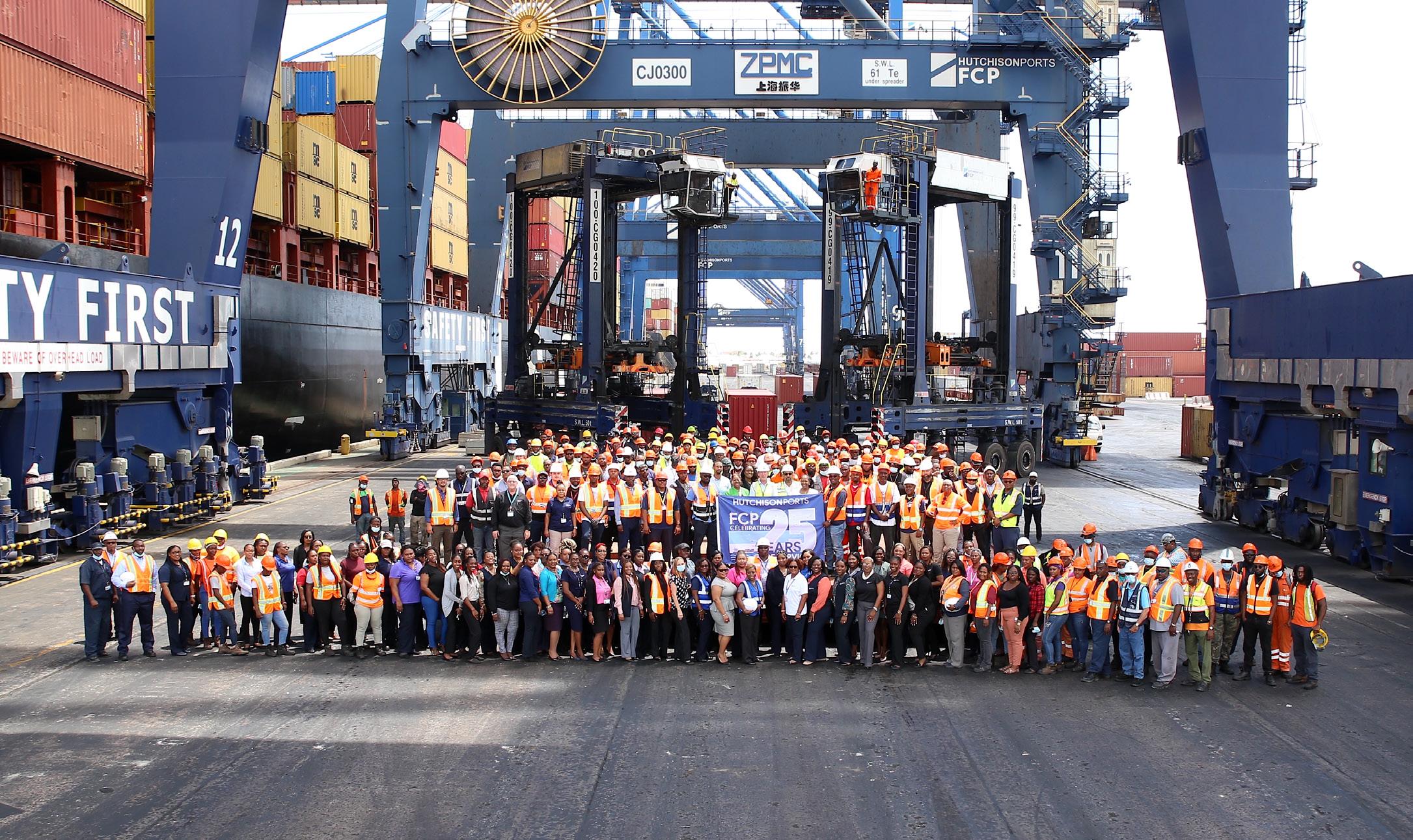
sustainability of our environment, business and most importantly people. In addition to measures we are taking to improve operational efficiency and minimize environmental impact, we are committed to developing and supporting our team members as well as our local community.
At FCP and FHC, we prioritize and encourage training and development at all levels, which assists with the effective transfer of knowledge, succession planning and our ability to ensure longevity in the business.
Our team members also remain actively involved in community contributions, particularly our ‘Go Green Initiative’ which has included tree planting activities and coastal clean ups on the island. FCP and FHC are also committed to an annual scholarship program which focuses on promoting academic excellence and developing human resources in the local community, particularly in disciplines related to our businesses.
Powered by our shared value of UNITY, FCP and FHC look to the future with our team and innovation at the forefront, using data to drive our decision-making, improve efficiencies, remain attentive and responsive to the needs of our customers, and continue to engage, train, and motivate our fantastic team members who make it all possible.

